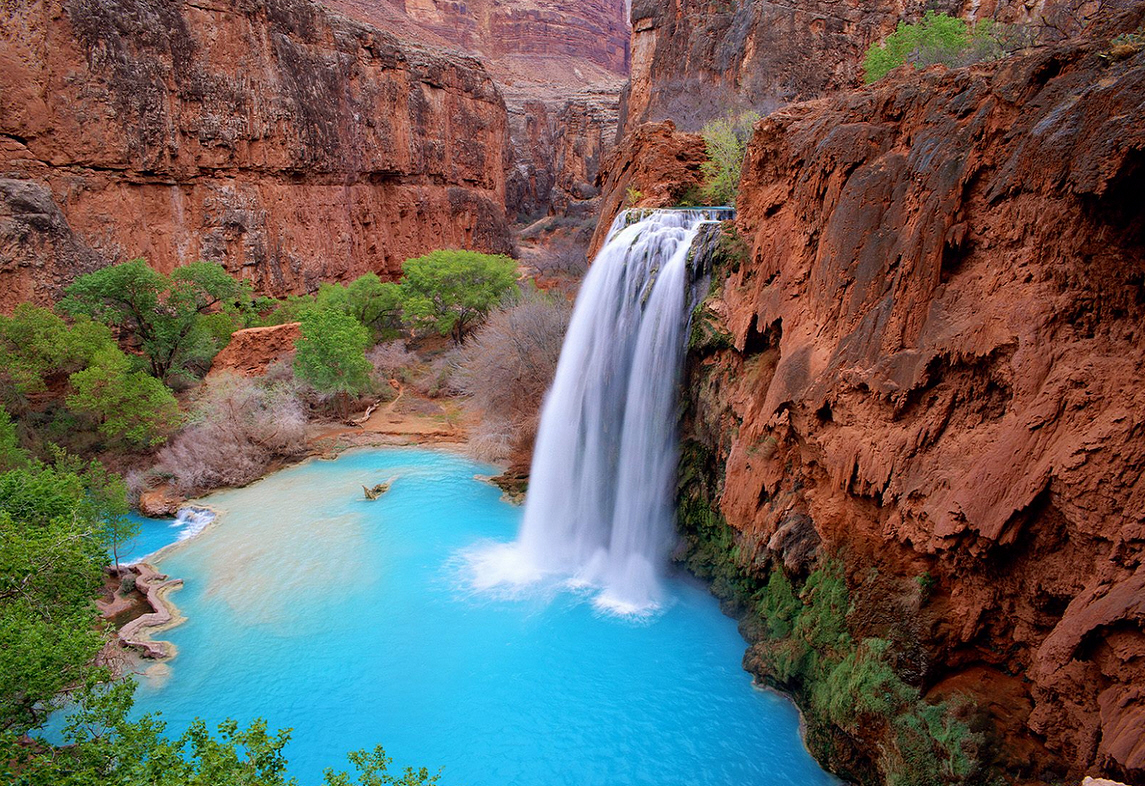Havasu Falls in the Grand Canyon


Havasu Falls are in the Grand Canyon, Navajo Indians known as Havasupai or Havasuw Hagjahgeevma is the second largest canyon waterfall.
It is located 220 miles north of the capital of Phoenix. It is a spectacular site, in addition to the beauty it possesses, gives us through his journey the opportunity to see many wonders, including: downs, multicolored rock formations, ravines, Sanjas …
The village of Supai, is located at the bottom of the Grand Canyon. To access it, you must cross a road, which goes down to get to about 2000 feet, approximately. This road is surrounded by a wall, which is vertical stone, after reaching the lowest part of the way, then you have to follow a dry creek up to the two rocks known as twin sisters, her base One is that the village is located. Close to these stones, is the Supai River, it runs very close to the village.
A cataract is a single 121 Ft waterfall that changes, sometimes divided into two since the composition of the rock is high in calcium, and varies according to ore deposits. In his fall as a large swimming pool, which due to the mineral content of the water has very unique ways. The water that flows through the cataract comes Havasu Creek and has a high content of magnesium carbonate. When calcium carbonate dissolved in running water rushes over rocks, branches or other structures deposited eventually creating new and fanciful ways similar to Pamukkale in Turkey or Baishui Tai in China.
The color of water is determined by the amount of calcium carbonate on the surface falls. Forming pools are delimited by structures cataract calcium naturally formed with a white background which makes the water appear green. However occasionally intense blue tones dominate the color of these natural rafts, this is because the magnesium concentration, the higher the concentration becomes deeper blue. This cataract water comes from a natural source, ground water coming in contact with a heat source as the water is at a constant temperature of 21 ° C throughout the year.
The appearance of the falls has varied greatly over the years, due to calcium content, making them unrecognizable 100 years ago. Every so often floods destroy the formations and the process starts again, it happened during the winter of 1910 when he broke his known as Bridal Veil Fall, before training today. In recent years her appearance has changed subtly, sometimes divided into two, sometimes in a single bound, until in 2008 a new flood broke many of the formations restarting the process.
All roads in the area are classified as hiking trails, is a place where the beauty of nature to any and perplexing is that it is almost impossible to describe. With only relatively short hike, arrived at the foot of the falls. One suggestion is to make this journey, you will be equipped with sufficient water and use some comfortable shoes to ease the way to go. It is also good to wear some sunscreen and a hat to protect from the sun’s rays. No doubt this one of the most beautiful places in all United States and is one of the main tourist attractions of the region.